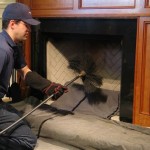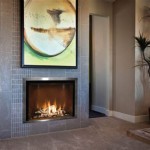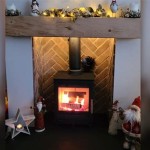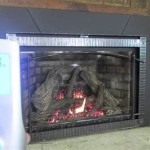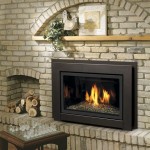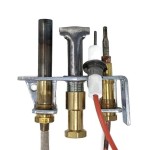Small Fireplace Screen: Functionality, Aesthetics, and Safety
Fireplaces provide warmth, ambiance, and a focal point for living spaces. However, they also present safety concerns due to the potential for sparks and embers to escape the firebox. A fireplace screen serves as a crucial barrier, containing these hazards and protecting the surrounding area from fire damage. When space is limited, a small fireplace screen becomes a particularly important consideration, balancing functionality with the constraints of a smaller hearth.
The selection of a suitable small fireplace screen necessitates a careful evaluation of various factors, including size, material, design, and ease of use. The primary function of the screen is to prevent embers from escaping while simultaneously allowing for adequate airflow to maintain combustion. Secondary considerations relate to the aesthetic compatibility of the screen with the overall décor of the room and the ergonomic aspects of its use, such as ease of cleaning and maneuverability.
Key Considerations for Selecting a Small Fireplace Screen
Choosing the right small fireplace screen requires attention to several key areas. These include determining the appropriate size, evaluating material options based on durability and heat resistance, and understanding the impact of different designs on both safety and aesthetics.
Size and Dimensions: Accurate measurement of the fireplace opening is the first and perhaps most critical step. The screen should be wide enough to completely cover the opening, extending slightly beyond the edges to prevent errant sparks from escaping around the sides. Height is equally important; the screen should be tall enough to prevent embers from lofting over the top, especially when the fire is burning brightly. The depth of the screen is less critical, but it should be sufficient to allow for comfortable access to the firebox for tending the fire. A screen that is too small will obviously fail to provide adequate protection, while a screen that is too large may appear disproportionate and cumbersome in a smaller space. Overlap of at least 2 inches on all sides is generally recommended.
Material and Construction: The materials used in the construction of a fireplace screen directly impact its longevity, effectiveness, and appearance. Common materials include steel, wrought iron, brass, and mesh. Steel and wrought iron are known for their durability and heat resistance, making them excellent choices for screens that will be exposed to high temperatures. Brass offers a more decorative option, but it may require more frequent polishing to maintain its luster. The mesh plays a crucial role in containing sparks and embers. It should be made of a durable, tightly woven material capable of withstanding high heat without warping or tearing. The gauge of the mesh will determine the size of particles it can effectively contain; a finer mesh offers better protection against smaller embers.
Design and Aesthetics: While functionality is paramount, the aesthetic appeal of a fireplace screen should not be overlooked. The screen should complement the existing décor of the room and contribute to the overall ambiance. Options range from simple, minimalist designs to more ornate and decorative styles. Some screens feature intricate scrollwork, while others have a more modern, geometric appearance. The finish of the screen, such as black, bronze, or brass, can also influence its visual impact. Consider the overall style of the room – is it traditional, contemporary, or rustic? Choose a screen that aligns with the prevailing aesthetic. Furthermore, consider the presence of any decorative elements on the screen. These elements, while visually appealing, should not compromise the screen's primary function of containing sparks and embers.
Types of Small Fireplace Screens
The market offers a variety of small fireplace screen types, each with its own advantages and disadvantages. Understanding these different types can help in selecting the option that best suits individual needs and preferences.
Single-Panel Screens: Single-panel screens are the simplest and most affordable option. They consist of a single, flat panel covered with mesh or metal. These screens are easy to install and move, making them a convenient choice for smaller fireplaces. However, they offer less flexibility in terms of positioning and may not provide as much protection as other types of screens. They are best suited for fireplaces that are rarely used or where the risk of sparks is minimal.
Three-Panel Screens: Three-panel screens consist of a central panel flanked by two hinged side panels. This design offers greater flexibility in terms of positioning and allows the screen to conform to the shape of the fireplace opening. The hinged side panels can be adjusted to provide a snug fit, even if the opening is slightly irregular. Three-panel screens also offer better protection against sparks and embers, as the side panels help to contain any that might escape from the edges of the firebox. These screens are a good compromise between functionality and affordability.
Bi-Fold Screens: Bi-fold screens offer the visual appeal of a single panel when closed but can be easily opened for access to the fire. The two panels are hinged in the middle, allowing them to fold flat against each other. This design is particularly useful for fireplaces that are frequently used, as it allows for easy tending of the fire. Bi-fold screens are often more decorative than single-panel or three-panel screens, making them a good choice for those who want to combine functionality with aesthetics.
Arched Screens: Arched screens feature a curved top, adding a touch of elegance and visual interest to the fireplace. The arched design can also help to deflect sparks and embers upwards, further reducing the risk of them escaping. These screens are often more expensive than other types, but they can significantly enhance the appearance of the fireplace. Arched screens are best suited for fireplaces with a traditional or formal design.
Maintaining and Caring for a Small Fireplace Screen
Proper maintenance and care are essential for extending the life of a small fireplace screen and ensuring its continued effectiveness. Regular cleaning and inspection can help to prevent rust, corrosion, and other damage.
Cleaning: Fireplace screens should be cleaned regularly to remove soot, ash, and other debris. A soft brush or vacuum cleaner can be used to remove loose particles. For more stubborn stains, a mild detergent and water solution can be used. Avoid using abrasive cleaners, as these can damage the finish of the screen. After cleaning, be sure to dry the screen thoroughly to prevent rust. The frequency of cleaning will depend on how often the fireplace is used. As a general rule, the screen should be cleaned at least once a month during the heating season.
Inspection: Regularly inspect the fireplace screen for signs of damage, such as rust, corrosion, or tears in the mesh. Rust can be removed with a wire brush and then treated with a rust-inhibiting paint. Tears in the mesh should be repaired or replaced immediately to prevent embers from escaping. Check the hinges and other moving parts to ensure that they are functioning properly. Lubricate them as needed with a light oil. Replacing damaged components promptly ensures the screen continues to provide adequate protection.
Storage: When the fireplace is not in use, it is important to store the screen properly to protect it from damage. If possible, store the screen in a dry, sheltered location. If it must be stored outdoors, cover it with a waterproof tarp to protect it from the elements. Before storing the screen, clean it thoroughly and apply a coat of protective wax or oil to prevent rust. Proper storage will help to extend the life of the screen and keep it looking its best.
Safety Precautions: Always exercise caution when handling a fireplace screen, especially when it is hot. Use gloves or tongs to move the screen if it is still warm from the fire. Never leave a fire unattended, even with a screen in place. Keep flammable materials away from the fireplace area. Ensure that smoke detectors are functioning properly and that a fire extinguisher is readily accessible. Fireplace screens are an important safety device, but they are not a substitute for responsible fire management practices.
Selecting the right small fireplace screen requires careful consideration of size, material, design, and maintenance. By understanding these factors, homeowners can choose a screen that provides both safety and aesthetic appeal, enhancing the enjoyment of their fireplace while minimizing the risk of fire damage.

5 Favorites Simple Fire Screens Remodelista

Buy Small Crest Flat Guard Fireplace Fire Screen Copper Plow Hearth At Desertcartsingapore

Deco Metal Fireplace Screen West Elm

12 Best Freestanding Fireplace Screens 2024

Parallel Lines Fireplace Screen West Elm

12 Best Freestanding Fireplace Screens 2024

Amos Brass Fireplace Screen Reviews Cb2

Free On Retro Gold 3 Panel Foldable Scroll Fireplace Screen With Acanthus Leaf Metal Homary In 2024 Privacy Walls Fire Cover Indoor Pets

Plow Hearth Mountain Cabin Small Fireplace Fire Screen With Door Black Target

51 Decorative Fireplace Screens To Instantly Update Your
Related Posts

